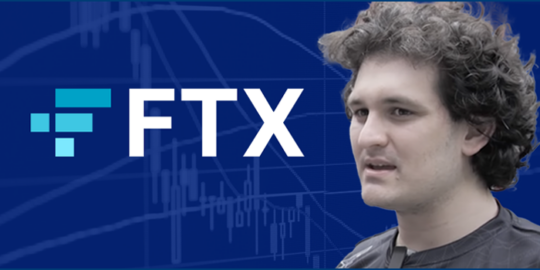Yesterday, the mining reward for bitcoin was halved to 6.25 bitcoin per transaction—the third halving since the cryptocurrency was created in 2009.
Although these bitcoin “halvings” are somewhat predictable, the outlook coming out of yesterday’s is notably less optimistic than previous years.
Less mining incentive, and a market that now includes bitcoin derivatives and futures (some creating downward price pressure), are just a few reasons why many expect this year’s halving to have less impact on bitcoin prices.
But before we get further into what the 2020 halving means for the crypto going forward, here’s some brief background on bitcoin halvings and mining…
In order for the bitcoin blockchain to remain decentralized—i.e., no single authority or bank overseeing transactions—a network of computers is needed to verify and process bitcoin transactions (the “blocks” in the bitcoin blockchain).
And the nature of decentralization means that all the computers in the network need to agree on the data before new transactions are added…
It’s a process known as mining, and miners are rewarded with bitcoin for providing the computer power needed to maintain and operate the network 24/7. The fact that it takes a lot of computing power to maintain the network helps limit the creation of new bitcoin… Electricity and hardware costs make mining prohibitively expensive for most individuals or small mining operations.
Halvings were conceived by bitcoin’s creator Satoshi Nakamoto as another means of constricting the supply of bitcoin. Since there will only ever be 21 million bitcoins created (today there are about 18.4 million in circulation), halvings are meant to slow this creation and, in theory, push prices higher.
So, for every 210,000 bitcoin blocks mined—which takes roughly four years—the bitcoin reward is automatically halved. It’s built into the bitcoin code.
At bitcoin’s inception in 2009, miners were rewarded with 50 bitcoins for every 10 minutes of mining (about $450,000 worth at today’s prices). In 2012, that reward was halved to 25 bitcoins. And in 2016, the reward was halved again to 12.5 bitcoins.
As for bitcoin’s price after those events…
Within a year of the 2012 halving, bitcoin rose nearly 12,000% from about $10 per bitcoin to around $1,180 each. And in 2016, bitcoin rose 367% from $600 to around $2,800 within a year, before eventually soaring to around $20,000 per bitcoin at the end of 2017.
In theory, a price increase makes sense. Halvings inevitably mean fewer miners, since mining becomes more expensive… Fewer miners mean fewer bitcoin available to purchase… fewer bitcoin for purchase means higher demand and prices.
So, what does yesterday’s halving mean for the price of bitcoin? And should investors expect returns as high as hundreds or thousands of percent gains?
If current sentiment is any indication, probably not… But that doesn’t mean prices won’t go up. This year’s bitcoin halving is different for a few reasons.
First, halving to 6.25 bitcoins per reward reduces daily revenue from mining operations from $15 million to about $8 million. Not only does this squeeze out smaller mining operations that can’t keep up with costs, fewer miners means reduced computing power for the bitcoin network.
Interestingly enough, yesterday’s halving has led to a slight increase in computing power, but not enough to offset the impact of a lower mining reward and daily revenues.
Another difference between this and previous halvings is the explosion of the bitcoin futures and derivatives market… These investment vehicles not only give investors exposure to bitcoin without holding the crypto, they also create a way to speculate on future bitcoin prices.
And just like commodities futures affect the price of things like oil and gold, bitcoin futures give the crypto bears a way to bet against bitcoin and apply downward price pressure.
The halving and bitcoin from here…
Keep in mind, we’re only one day out from the 2020 halving. Outside of preprogrammed events, the crypto market is just as unpredictable as the stock market, if not more. So any predictions made today—even by the so-called experts—need to be viewed with that in mind.
Just one day after the event, there’s already some consensus around a positive long-term outlook for bitcoin. The reasons are varied—some point to the COVID-19 stimulus, while others still point to past halvings—but crypto experts and advisors like CoinShares are predicting “materially higher” prices 12–18 months from now.
Whether you’re investing in bitcoin or stocks, nothing is ever a sure thing… and a history of skyrocketing prices doesn’t guarantee this halving will have the same result.
What we do know is a well-diversified portfolio reduces risk and helps hedge against disaster when a market or sector is in trouble. And in a zero-interest world where governments are printing money and spending trillions, holding bitcoin can be a hedge against inflation.
If you’re concerned about the state of the global COVID-19 economy and runaway spending, consider how bitcoin might benefit your portfolio for the long term…
If the economic impact of COVID-19 is as severe as many predict, the market tailwinds for bitcoin are just getting started.
Until next time,

Chris Gaarde
Contributing Editor, The Token Tracker |
P.S. This past Sunday, Frank sat down for a special Q&A session on today’s markets and economy. He answered questions on everything from investing in the months and years ahead, to commodities, to his own bullish outlook on bitcoin.
Plus, he shared the strategy he’s using to make triple-digit gains in today’s COVID-19 market—Even as prices fall.
If you missed the Q&A and this incredible strategy, watch it now… It won’t be online for long.









Yesterday, the mining reward for bitcoin was halved to 6.25 bitcoin per transaction—the third halving since the cryptocurrency was created in 2009.
Although these bitcoin “halvings” are somewhat predictable, the outlook coming out of yesterday’s is notably less optimistic than previous years.
Less mining incentive, and a market that now includes bitcoin derivatives and futures (some creating downward price pressure), are just a few reasons why many expect this year’s halving to have less impact on bitcoin prices.
But before we get further into what the 2020 halving means for the crypto going forward, here’s some brief background on bitcoin halvings and mining…
In order for the bitcoin blockchain to remain decentralized—i.e., no single authority or bank overseeing transactions—a network of computers is needed to verify and process bitcoin transactions (the “blocks” in the bitcoin blockchain).
And the nature of decentralization means that all the computers in the network need to agree on the data before new transactions are added…
It’s a process known as mining, and miners are rewarded with bitcoin for providing the computer power needed to maintain and operate the network 24/7. The fact that it takes a lot of computing power to maintain the network helps limit the creation of new bitcoin… Electricity and hardware costs make mining prohibitively expensive for most individuals or small mining operations.
Halvings were conceived by bitcoin’s creator Satoshi Nakamoto as another means of constricting the supply of bitcoin. Since there will only ever be 21 million bitcoins created (today there are about 18.4 million in circulation), halvings are meant to slow this creation and, in theory, push prices higher.
So, for every 210,000 bitcoin blocks mined—which takes roughly four years—the bitcoin reward is automatically halved. It’s built into the bitcoin code.
At bitcoin’s inception in 2009, miners were rewarded with 50 bitcoins for every 10 minutes of mining (about $450,000 worth at today’s prices). In 2012, that reward was halved to 25 bitcoins. And in 2016, the reward was halved again to 12.5 bitcoins.
As for bitcoin’s price after those events…
Within a year of the 2012 halving, bitcoin rose nearly 12,000% from about $10 per bitcoin to around $1,180 each. And in 2016, bitcoin rose 367% from $600 to around $2,800 within a year, before eventually soaring to around $20,000 per bitcoin at the end of 2017.
In theory, a price increase makes sense. Halvings inevitably mean fewer miners, since mining becomes more expensive… Fewer miners mean fewer bitcoin available to purchase… fewer bitcoin for purchase means higher demand and prices.
So, what does yesterday’s halving mean for the price of bitcoin? And should investors expect returns as high as hundreds or thousands of percent gains?
If current sentiment is any indication, probably not… But that doesn’t mean prices won’t go up. This year’s bitcoin halving is different for a few reasons.
First, halving to 6.25 bitcoins per reward reduces daily revenue from mining operations from $15 million to about $8 million. Not only does this squeeze out smaller mining operations that can’t keep up with costs, fewer miners means reduced computing power for the bitcoin network.
Interestingly enough, yesterday’s halving has led to a slight increase in computing power, but not enough to offset the impact of a lower mining reward and daily revenues.
Another difference between this and previous halvings is the explosion of the bitcoin futures and derivatives market… These investment vehicles not only give investors exposure to bitcoin without holding the crypto, they also create a way to speculate on future bitcoin prices.
And just like commodities futures affect the price of things like oil and gold, bitcoin futures give the crypto bears a way to bet against bitcoin and apply downward price pressure.
The halving and bitcoin from here…
Keep in mind, we’re only one day out from the 2020 halving. Outside of preprogrammed events, the crypto market is just as unpredictable as the stock market, if not more. So any predictions made today—even by the so-called experts—need to be viewed with that in mind.
Just one day after the event, there’s already some consensus around a positive long-term outlook for bitcoin. The reasons are varied—some point to the COVID-19 stimulus, while others still point to past halvings—but crypto experts and advisors like CoinShares are predicting “materially higher” prices 12–18 months from now.
Whether you’re investing in bitcoin or stocks, nothing is ever a sure thing… and a history of skyrocketing prices doesn’t guarantee this halving will have the same result.
What we do know is a well-diversified portfolio reduces risk and helps hedge against disaster when a market or sector is in trouble. And in a zero-interest world where governments are printing money and spending trillions, holding bitcoin can be a hedge against inflation.
If you’re concerned about the state of the global COVID-19 economy and runaway spending, consider how bitcoin might benefit your portfolio for the long term…
If the economic impact of COVID-19 is as severe as many predict, the market tailwinds for bitcoin are just getting started.
Until next time,
Contributing Editor, The Token Tracker
P.S. This past Sunday, Frank sat down for a special Q&A session on today’s markets and economy. He answered questions on everything from investing in the months and years ahead, to commodities, to his own bullish outlook on bitcoin.
Plus, he shared the strategy he’s using to make triple-digit gains in today’s COVID-19 market—Even as prices fall.
If you missed the Q&A and this incredible strategy, watch it now… It won’t be online for long.